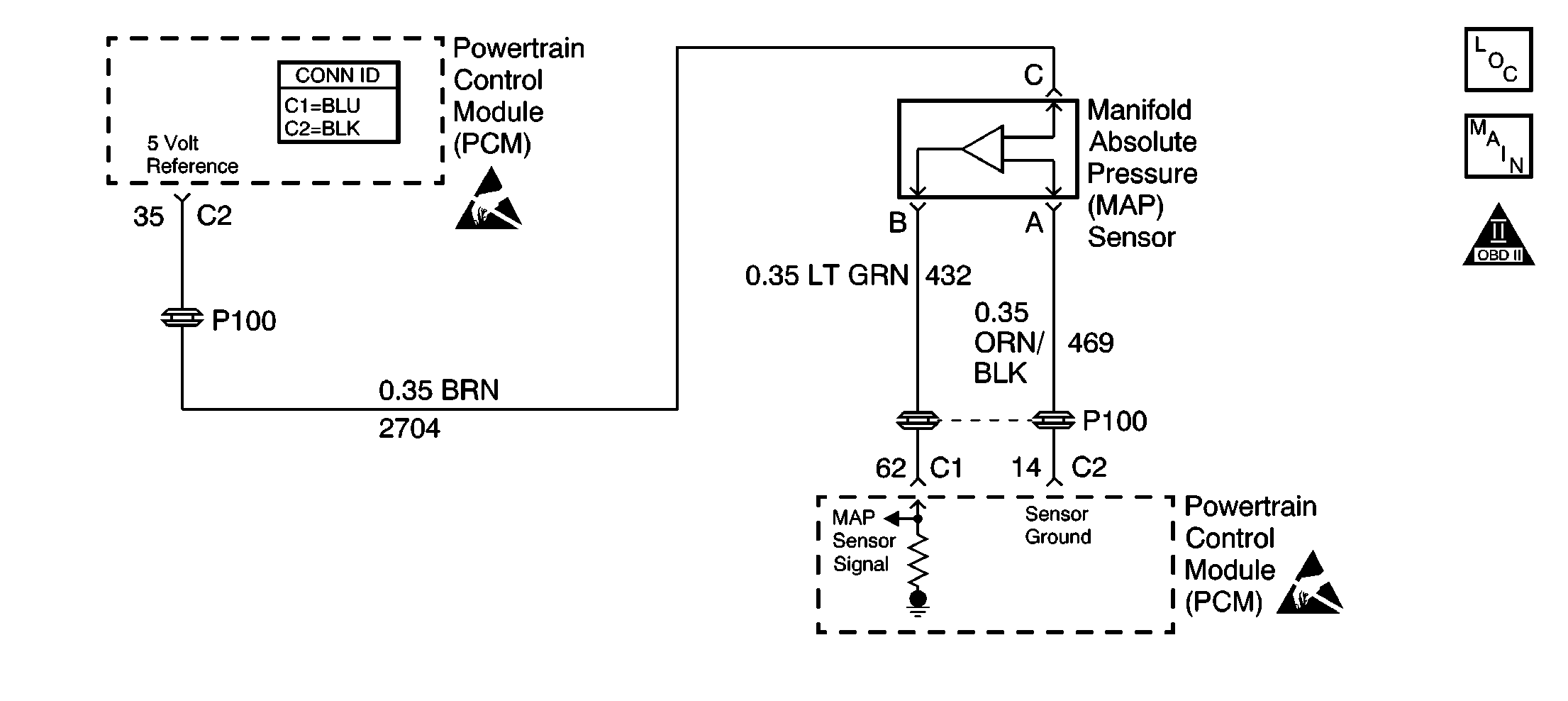
Circuit Description
The manifold absolute pressure (MAP) sensor measures the changes in the intake manifold pressure which result from engine load (intake manifold vacuum) and RPM changes and converts the changes into a voltage output. The powertrain control module (PCM) sends a 5 volt reference voltage to the MAP sensor. As the manifold pressure changes, the output voltage of the sensor also changes. By monitoring the sensor output voltage, the PCM determines the manifold pressure. A lower pressure (low voltage) output voltage will be about 1.0 to 1.5 volts at idle. A higher pressure (high voltage) output voltage will be about 4.5 to 4.8 V at wide open throttle (WOT). The MAP sensor is also used to measure the barometric pressure under certain conditions , allowing the PCM to make adjustments for different altitudes. The PCM uses the MAP sensor to control fuel delivery and ignition timing.
Test Description
The numbers below refer to the step numbers on the diagnostic table.
Important: Be sure to use the same diagnostic test equipment for all measurements.
-
Applying 34 kPa (10 in Hg) vacuum to the MAP sensor should cause the voltage to be 1.5 to 2.1 volts less than the voltage at Step 3. Upon applying vacuum to the sensor, the change in the voltage should be instantaneous. A slow voltage change indicates a malfunctioning sensor.
-
Important: Make sure that the connector remains securely fastened.
Move the sensor connector by hand (only) while observing a scan tool in order to test for an intermittent connection. An output that changes more than 0.10 volt indicates a bad connection. If the output is OK, replace the sensor.
Step | Action | Value(s) | Yes | No | ||||
|---|---|---|---|---|---|---|---|---|
1 | Did you perform the Powertrain On-Board Diagnostic (OBD) System Check? | -- | Go to Step 2 | |||||
2 | Use a scan tool in order to compare the BARO reading with a known good vehicle. Are the BARO readings within the specified value of each other ? | 3 kPa | Go to Step 3 | Go to Step 5 | ||||
Is the difference more than specified value? | 1.5 V | Go to Step 4 | Go to Step 5 | |||||
4 |
Did you find and correct the condition? | -- | Go to Step 7 | Go to Step 6 | ||||
5 |
Did you find and correct the condition? | -- | Go to Step 7 | Go to Step 6 | ||||
6 |
Did you complete the repair? | -- | Go to Step 7 | -- | ||||
7 | Start and operate the vehicle within the conditions under which the original symptom was observed. Does the system operate properly? | -- | System OK | Go to Step 2 |
